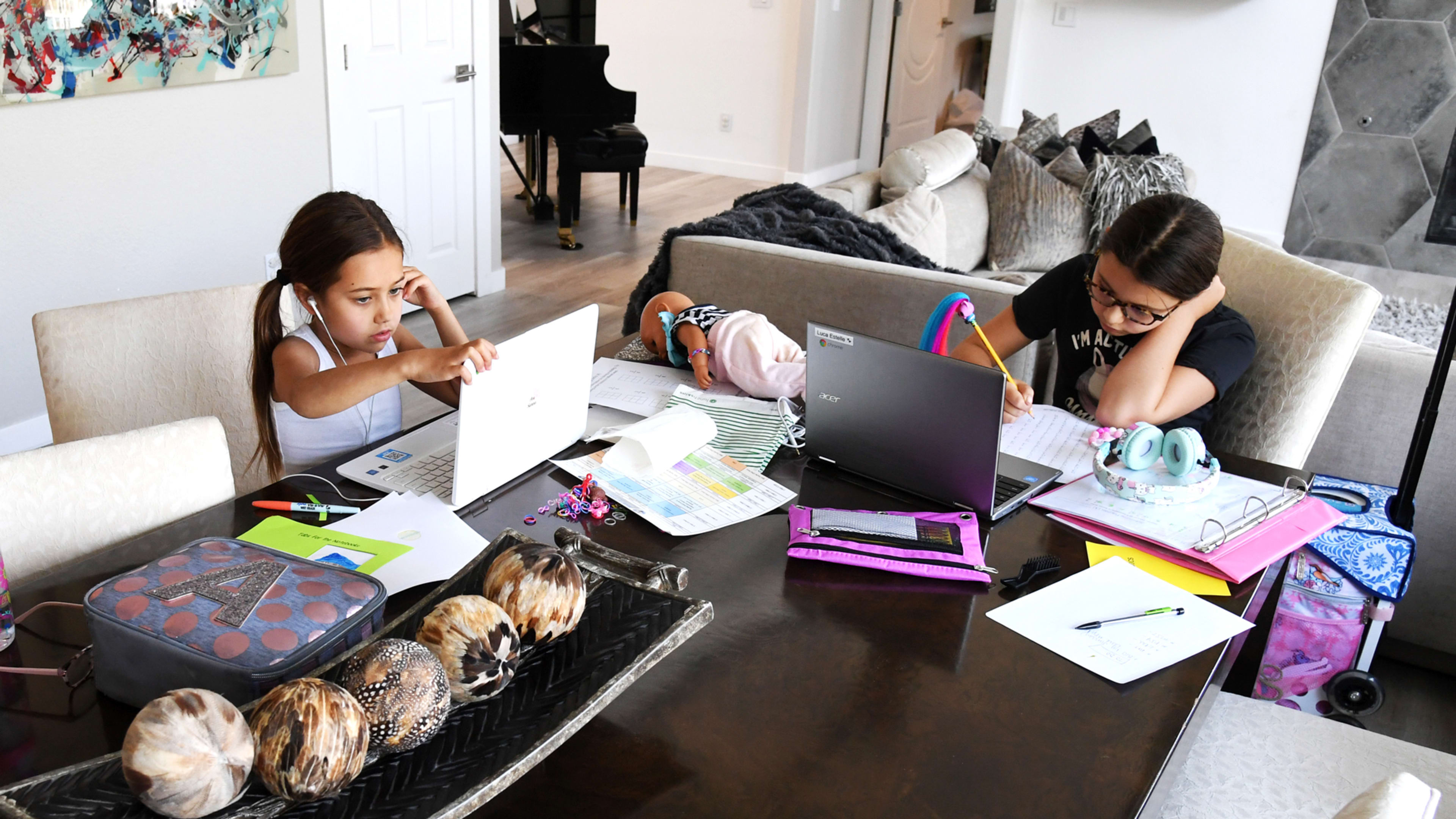It’s only taken a year since the onset of the pandemic, but serious help is finally coming for students and their parents who haven’t had reliable internet bandwidth for distance learning.
First, a bill passed in the dying days of the Trump administration will bring $50 discounts on internet access for lower-income households. Second, the Biden administration’s first major bill will let schools and libraries share connectivity beyond their own premises.
Combined, they could make a sizable dent in a problem that educational advocates identified as the “homework gap” years before the coronavirus pandemic aimed a harsh spotlight at it.
“The homework gap exists in rural America, urban America, and everywhere in between,” said the Federal Communications Commission’s Jessica Rosenworcel in April 2019, almost two years before President Biden elevated her from FCC commissioner to acting FCC chair.
The first phase of help arrived with the Consolidated Appropriations Act that President Trump signed on December 27. That mammoth spending bill allocated $3.2 billion for an Emergency Broadband Benefit that will bring $50 monthly discounts ($75 on tribal lands) for internet access to cash-strapped Americans.
This benefit and a one-time $100 reimbursement for computer purchases will be open to far more people than the FCC’s existing Lifeline subsidies. Beneficiaries will include parents of children eligible for free or discounted school lunches, workers whose incomes plunged since last February, Pell Grant college-aid recipients, and people who already qualify for internet providers’ low-income options.
The second phase arrived with the American Rescue Plan Act that Biden signed Thursday. That sets up an Emergency Connectivity Fund of $7.171 billion to pay for schools and libraries to expand their existing connectivity beyond their own properties so that nearby students, staff, and patrons can connect wirelessly.
The need is there
Both of these measures promise to get millions of Americans online, although the number of millions isn’t clear yet. “The agency hasn’t published any estimates on how many households could benefit,” said Paloma Perez, press secretary for Rosenworcel, in an email.
Demand clearly exists. A Morning Consult poll conducted in early March found that 16% of white adults making less than $50,000 annually had missed paying an internet-service provider bill in the last year—and that the figure among Black, Latino, and other nonwhite adults was 27%.
Both programs also face big challenges, judging from such earlier broadband subsidies as Lifeline—which as of January had sign-ups only from an estimated 26% of eligible households nationwide.
“More people have not used Lifeline because they don’t know about it,” says Nicol Turner-Lee, director of the Center for Technology Innovation at the Brookings Institution, a centrist policy institute in Washington. “We need to raise awareness among families that this is available.”
Turner-Lee, author of the forthcoming book Digitally Invisible: How the Internet Is Creating the New Underclass, advised having the social-service agencies that already connect with people market the new Emergency Broadband Benefit. “The FCC is not a social-services agency,” she said.
Jennifer Huddleston, director of technology and innovation policy at the American Action Forum, a free-market-oriented policy shop in Washington, advised offering a simpler application process than Lifeline (which she called “very complicated”) and suggested policymakers take full advantage of the two bills’ provisions for providing computing devices.
“It’s not just a question of internet access,” she says. “It’s a question of having enough devices for all the students who may be in a single household and trying to engage in e-learning at the same time.”
John Windhausen, Schools, Health & Libraries Broadband CoalitionThere are huge areas of the U.S. where we don’t have any broadband.”
In addition, Windhausen warned of the potential for overlap between these programs. “We don’t want to give families the double subsidy,” he said. “That’s something to watch out for.”
In much of America—not only its more rural parts—the broadband problem isn’t affordability but availability. The two new programs don’t address that. But a bill announced Thursday by Senator Amy Klobuchar (a Democrat) and Representative Jim Clyburn (also a Democrat), the Accessible, Affordable Internet for All Act, could—starting with $80 billion for broadband infrastructure nationwide.
“We need the broadband infrastructure bill,” said SHLB’s Windhausen. “Because there are huge areas of the U.S. where we don’t have any broadband.”
AAF’s Huddleston, however, advised against focusing on building out fiber connectivity to the exclusion of such upcoming connectivity solutions as low-Earth-orbit satellite broadband (an instance is SpaceX’s Starlink) and 5G wireless on newly freed-up frequencies with much more capacity.
And at Brookings, Turner-Lee noted that it’s not enough to leave people with a local broadband monopoly—and that this problem exists even in built-up places.
“We still have to do our work to ensure competitive access in rural and urban areas,” she said before offering a glum but fair assessment of progress so far: “We’ve just not done a great job.”
Recognize your brand’s excellence by applying to this year’s Brands That Matter Awards before the early-rate deadline, May 3.
